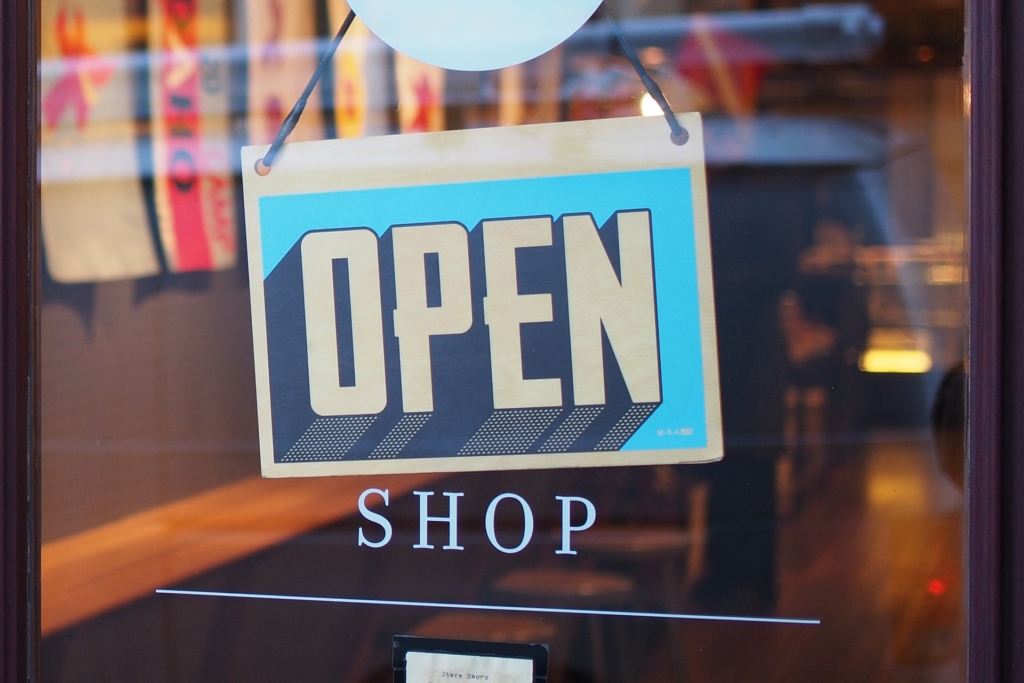
COVID-19 has left its mark on likely every business nationwide. Still, restaurants and retail establishments have especially struggled to comply with the government-issued regulations, practice safety measures and keep their businesses profitable. Houston Community College (HCC) recently invited me to deliver a virtual presentation on “Marketing Best Practices to Drive Foot Traffic to Your Business” with a special focus on restaurants and retail businesses. While this post isn’t an exact replica of that presentation, it’s a good recap and offers loads of marketing tips for businesses that are dependent on walk-in buyers.
1). First, double down on your marketing during slow times, especially digital marketing. Marketing is NOT the area to cut your budget. Marketing helps you stay in front of your customers and prospects. Plus, doing more marketing now may allow you to take advantage of discounted advertising rates and leap-frog your competition. Capture market share from your weaker rivals by maintaining or increasing your marketing spend. Higher visibility is really important in an economic downturn. Also, history tells us that companies that wait until after the economy recovers… will be at the mercy of their “better prepared competitors.” As the quote below from Janice Jucker of 3 Brothers Bakery indicates, economic downturns mean it’s time to do more marketing and boost your visibility.
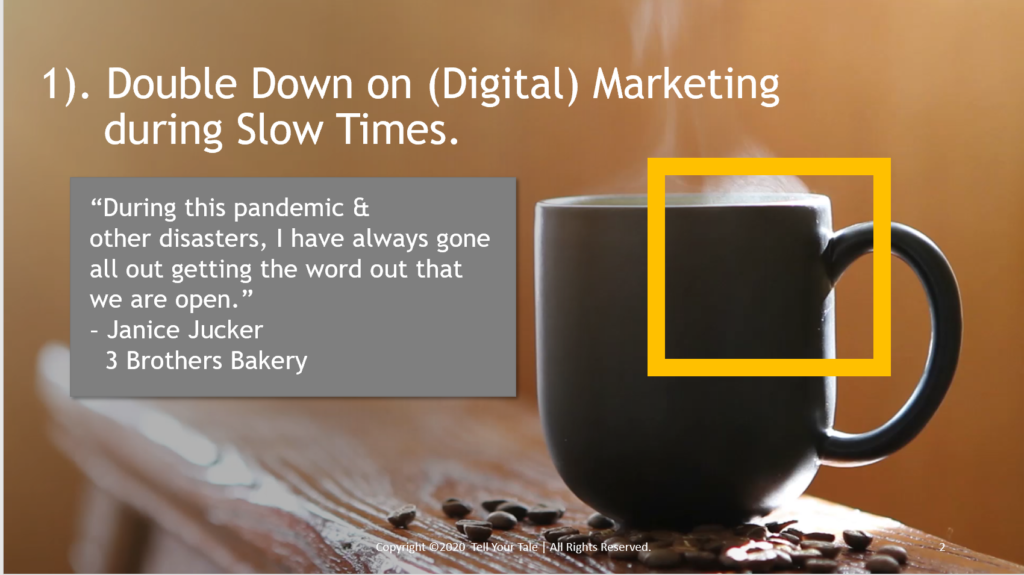
On the digital front, closely monitor your paid search activity.* Besides the number of clicks to your website, what is the activity telling you? Which information is the buyer really seeking by searching on set words? Are the words and phrases being re-funneled into your other digital marketing efforts? Examine how your restaurant or store could incorporate that information into other digital ads, blog posts and content on your website. Also, simplify and streamline how buyers can shop for your products on social media. Especially helpful for retailers, you can use Instagram to sell products with the option to pick up the purchase in-store (draws customers in) or have the purchase shipped to the customer for a fee. Restaurants can do this with gift cards as well as any branded items like shirts or hats you sell. (You also get fans who will wear your branded wearables, who in short are doing free marketing for you as well.)
2). Next, because we know many people will choose reduced price options, you want to be pro-active and show them CHOICES. For 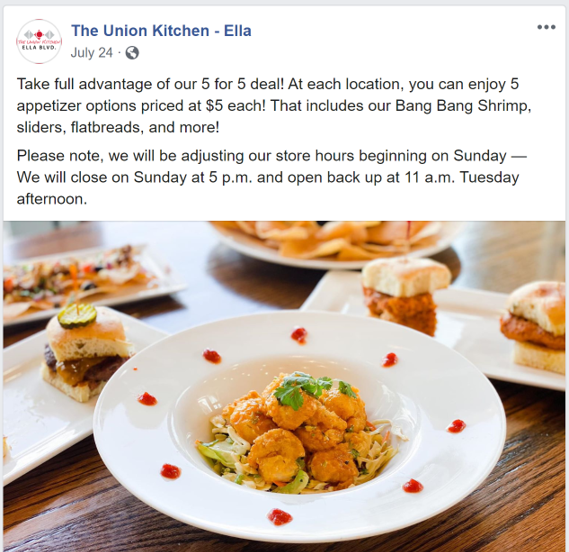 instance, The Union Kitchen has been promoting their 5 appetizer options for $5 each. Now, hopefully, customers come in for this appetizer option and the wait staff can sell them on an entrée and drinks. Like this restaurant did, use sensible CHOICES to draw people in. Social media and specifically Facebook and Instagram are great ways to show your food or retail products, while keeping the marketing very affordable.
instance, The Union Kitchen has been promoting their 5 appetizer options for $5 each. Now, hopefully, customers come in for this appetizer option and the wait staff can sell them on an entrée and drinks. Like this restaurant did, use sensible CHOICES to draw people in. Social media and specifically Facebook and Instagram are great ways to show your food or retail products, while keeping the marketing very affordable.
I know some of you may push back to promoting a less expensive option, but if your customers can move from a $100 price point to a $50 price point, for example, isn’t that better than $0 when they’re not coming in? Plus, this gives you the opportunity to re-connect with these customers, reassure them that it’s safe and create an enjoyable environment and experience for them. All those things together help create brand loyalty & encourage customers to return to your business.
According to Harvard Business Review****, “While premium-brand market leaders shouldn’t move their brands down-market, they can introduce a ‘fighter brand,’ a lower-priced version of the premium offering sold under a different name and backed by minimal advertising… When the recession ends, the fighter brand can either be quietly withdrawn or continue as a value entry in the overall product line.” So for example, if your store sells dog food, look at your most popular products and identify a comparable, less expensive option that you can promote to clients as your “fighter brand”.
3). At least every restaurant in town knows about Houston Restaurant Weeks (even if you don’t participate). Here’s a twist on the annual event. Retailers, what do you sell that complements what restaurants around you are doing? Which restaurant is in your same retail center? Check out their Restaurant Weeks Specials and get creative about how you can COMPLEMENT those promotions. For instance, a spice retailer or cooking supplies store could promote the different spices and cooking tools that it offers to recreate your favorite dish from Houston Restaurant Weeks well after August and September has passed. A clothing store could promote the perfect outfit for a Houston Restaurant Weeks outing. For example, “You want to look HOT, not feel HOT. Come in for a cool Houston Restaurant Weeks outfit and support local business.”
4). How Often Are You Contacting Your VIPs? How many of you are looking at your VIP customer list from January –March to see who has and has not been back to visit you? How are you acting on that? I’ve been surprised at how few restaurants and retailers have emailed or called those VIP customers. If you don’t really have a VIP customer group established, consider pinpointing your top sales during the first 3 months of 2020.
Taking the time to reach out to your most loyal customers can really pay off. I also recommend tailoring your outreach as much as you can. If your traditional buyers are Millennials or Gen Y, you can text them. If instead they’re Baby Boomers, an email or phone call is better. Yes, this can be time-consuming but these high-touch points do a lot for connecting you with your customers. Plus, you can divide the effort up between managers or store representatives, depending on how many top customers you have in this group. Honestly, if I received a call from a manager of one of the restaurants or stores that we used to frequent, I’d be convincing my husband to go to that place within the week. I’d feel like the restaurant/store appreciated me and I’d want to do a better job of supporting them.
5). Keep emailing. If you previously distributed a monthly or bi-monthly email newsletter, don’t stop now… even if that means that you  have to shift responsibilities because you’ve had to let some people go. Many restaurants and stores are NOT doing this and it’s a missed opportunity. There are email programs that specialize in blast emails and getting your email delivered. They’re cheap, even free like MailChimp. (TIP: Don’t try emailing large groups of people from your personal email address or generic store email. Your email will likely get black-listed and that can negatively impact your website traffic.)
have to shift responsibilities because you’ve had to let some people go. Many restaurants and stores are NOT doing this and it’s a missed opportunity. There are email programs that specialize in blast emails and getting your email delivered. They’re cheap, even free like MailChimp. (TIP: Don’t try emailing large groups of people from your personal email address or generic store email. Your email will likely get black-listed and that can negatively impact your website traffic.)
Use regularly scheduled emails to let previous customers know that a) you are open during X hours, b) how your business practices safety during COVID and c) what your latest product promotion or food special is. These are basic promotions that you should be running at least once a month. During a market downturn, you really want to connect with your retail and restaurant patrons more. Besides product promos, you can feature personal information in your eNewsletters that focus on a different staff member in each issue. This will help readers get to know your staff and strengthen the personal connection between your team and your customers. Read our blog post on “The Importance of Email Newsletters” for more details on this topic.
Another way to stay in touch with customers is to send birthday emails. A restaurant could offer a free dessert when a meal is purchased any time during your birthday month. Retailers can adopt a similar approach. For one pet products retailer, we emailed customers an offer for a free pet treat and a discount that was sent at the beginning of their pets’ birthday month. The offer could be used any time during that month. Since each month’s coupon included an expiration date, the offer became time-sensitive and motivated customers to come into the stores that month. The coupon code allowed the store managers and owners to track the success of the program and see what other purchases were made at the same time… so they were able to measure the UPSELL. Again, email is a low-cost, high-return marketing tool.
6). Holidays are opportunities to be VISIBLE with your target market. Use a unique twist to be remembered. A local Mexican food 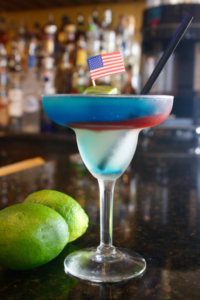 restaurant invited patrons to celebrate American Independence throughout the month of July with the Independence Rita that even donned a mini flag.
restaurant invited patrons to celebrate American Independence throughout the month of July with the Independence Rita that even donned a mini flag.
One of the more successful Back to School promotions for a restaurant that I’ve seen was a Back to School Brunch. Each restaurant hosted this annual event, timed carefully with the local school district’s first day of school. The restaurants served $2 mimosas and allowed parents (predominantly but not only women) to either attend with teary eyes as their youngsters started school OR to celebrate that the kids were out of the house for the better part of the day. The event was promoted on the restaurant website, in the eNewsletter, on Facebook and by word of mouth. It was a sell-out every year and the only criticism I ever saw was that the teachers couldn’t participate!
For retailers, consider running a promotion along the lines of “Back to School Means 30 minutes of Retail-Therapy for You.” Have some fun with this. Yes, you may need to open early to capture parents after they drop off kids at school, but this isn’t a permanent change. This year, you may have another opportunity to run this same promotion since some schools will start with virtual learning and then go back to campus later in the school year, if we flatten the COVID-19 curve.
Remember to notify your local community newspaper of your offering and invite them to come out as well. If a reporter isn’t available, take your own photos of a crowd at your location and forward those to the editor or reporter at your local paper, asking if the publication would run an article after the event to highlight the success. This allows you to get ongoing publicity.
The last point I’ll share on national holidays is to check out TimeAndDate.com/Holidays/Fun/. This URL is just one of many online resources for fun holidays that restaurants and retailers can take advantage of. Everyone should be able to pick at least one of these holidays and run a related promotion. Does your business make customers happy? Tie that into a “Happiness Happens Day” promotion that runs August 8. You don’t have to give products away for free. These holidays are merely opportunities to be VISIBLE. For restaurants, “Eat Outside Day” on August 31 is an easy way to promote a restaurant patio and you can also interweave messages about social distancing.
7). Go virtual. Teach a class on how to make a dish and charge for participation through EventBrite or your own website. I LOVE what the William Chris Vineyard in Hye, Texas is doing. Since the vineyard can’t conduct wine tours currently, the team has put together virtual wine tastings every Saturday at 4 pm. If you go to their website, you’ll see the featured wines for sale. Further down the web page, you’ll see food pairing suggestions, so customers can grocery shop for the dinner ingredients to pair with the wine they’ll taste. Now, is this as fun as being at the vineyard? NO, but it’s a unique experience and I’ve already signed up for one later in August. This is low cost outreach for William Chris and gets great engagement online. Plus, they can easily measure the sales influenced by the promotions. Oh, and it’s just plain fun.
Restaurants can partner with their food and beverage distributors to conduct virtual events with promotional costs shared between the restaurant and the distributor. Retail can do instructional videos on how to use products or un-boxings of products new in the store. Virtual events are not just for the professionals who do public speaking. It’s a great way to connect with customers and make sales.
Here’s another example of taking restaurants virtual. Guests register for a class through the restaurant’s website, pick up their food and bottles of wine from the restaurant shortly before the event, return home and log onto Zoom at the designated event time, just like you would for a dinner reservation. In July, The Houston Chronicle reported on Roma in Rice Village and quoted Jeremy Parzen, a wine writer, educator and media consultant, as saying: “The bottom line is the restaurant wouldn’t be open right now if it weren’t for these dinners… We all want Roma to be there when things open up again.”*
8). Creatively partner with each other. You likely have seen restaurant dishes available in HEB and Kroger. Retailers, partner with a local restaurant to sell wrapped desserts at your retail check-out counters that, OF COURSE, are branded with the restaurant’s logo and website. Restaurants, look for ways that you could highlight a local retailer. Get creative about how you can come together to help each other.
There’s always a line out the door at our local UPS store in the Heights, and of course, because of COVID, only four customers can be inside at a time, so the line is really long, although fast moving. Why aren’t the local restaurants and frozen yogurt store giving away free samples and promotional cards – even scannable coupons — to those prospects waiting in the UPS line in the Houston heat? Hello, missed opportunity!
Here’s another example. Two well-respected retailers – Tootsies and Norton Ditto – came together to share a pop-up retail space of 1,700 square feet at 3021 Kirby Drive near West Alabama, according to Shelby Hodge’s article in PaperCity. They split the rent and have marked down their clothing at this location up to 75 percent off. (This gets back to having a temporary fighter brand that gets sales in the door by offering less expensive choices.)
9). Demonstrate How Your Business Gives Back. Many restaurants are engaged in Houston Restaurant Weeks that support the Houston Food Bank. For those of you not participating in that initiative, consider helping our local economy with community involvement. If your business has some down time, consider volunteering together. This helps with company morale and shows goodwill from your business.
Other community-oriented options include:
- Ask customers to round up their payment with a donation to the YMCA’s Operation Backpack.
- Donate office supplies that your business no longer needs. A moving consultant helped a client prior to its big move by coordinating a donation of its unneeded office supplies to HISD.
- Check with the Small Business Administration to see if you can host a webinar to share your experience with others– at no charge.
10). Promote Your Efforts on Social Media. As a marketing professional, I’d be remiss if I didn’t cover social media. Once you’ve gone 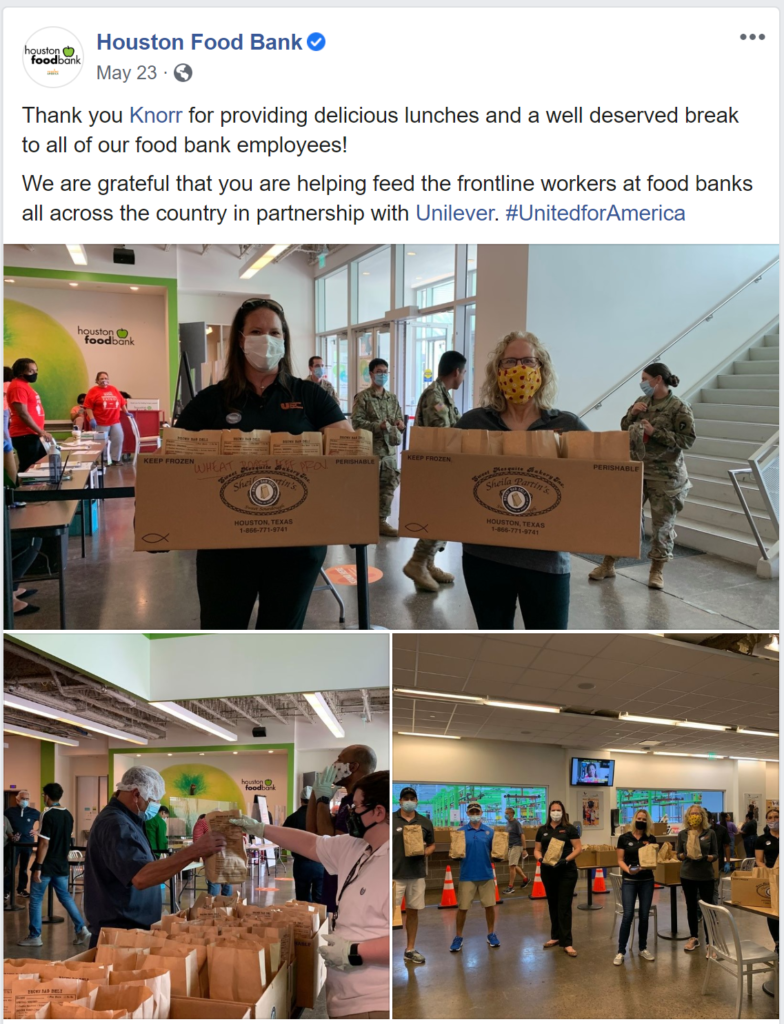 out into the community and done some good works, promote your efforts. Some of you may be hesitant to do this, thinking you didn’t donate for the PR, but here’s the thing: If you don’t toot your own horn, no one else will. Promoting your community involvement is a good way to stay in front of clients and prospects. You show others that you’re here for Houston (or insert your location) during the ups and the downs. Plus, people like to see photos of others rolling up their sleeves to volunteer.
out into the community and done some good works, promote your efforts. Some of you may be hesitant to do this, thinking you didn’t donate for the PR, but here’s the thing: If you don’t toot your own horn, no one else will. Promoting your community involvement is a good way to stay in front of clients and prospects. You show others that you’re here for Houston (or insert your location) during the ups and the downs. Plus, people like to see photos of others rolling up their sleeves to volunteer.
On the right, you’ll see a social media post that the Houston Food Bank did and tagged the companies Knorr and Unilever. This helps those two organizations get visibility with people who may not be following them on social media. More importantly, I’ll commit to you that after I saw this, I decided to be mindful about buying more products from Knorr and Unilever since they helped our community. Again, it’s all about showing that your organization is present & giving during the ups and downs. While photos of your volunteers is really good, VIDEOS are even more powerful.
11). Next, a great way to get your name noticed is to EITHER write articles for local media outlets or to get to know the reporters who cover your industry and strategically let them know about your expertise. Be available to them for future stories. Each media outlet will have different guidelines on whether or NOT they accept outside/bylined articles, the length, topics covered, deadlines, etc. The most important aspect of these media opportunities is the visibility you’ll get. It’s a great way to demonstrate your expertise to these publication’s readers that may not know who you are…. YET.
Also, once you’ve been covered in a publication, you gain at least 2 other benefits.
- You can cross-promote the article on your social media channels and link to the article on the publisher’s site.
- The reporter is more inclined to think of you for future stories, if you were helpful and prompt.
Like the regular eNewsletters, THIS should also be part of your ongoing marketing – even when the economy is good.
12). Another opportunity that costs you little to nothing is to pitch your organization for awards. Make time to look at awards that are organized by local media like the Houston Business Journal (HBJ). The list here is for HBJ’s 2020 Most Admired CEO Award honorees. In looking through the list last week, I noticed only three restaurants and no retailers. Did you know you can nominate yourself? The winners will receive priceless media coverage, meaning publicity beyond their immediate circle. It’s all about visibility. You can also look at regional awards with your Chamber of Commerce and other associations that are NOT industry specific.
13). Start your holiday planning. It’s hot as blazes in Houston, but the summer is prime time for holiday planning and story crafting. Plan for extra flexibility since we don’t know how the pandemic will be impacting us in four months. Don’t wait though. Above are some of the key milestones we help our clients plan for as summer approaches its end. COVID-19 pushes us to plan earlier in anticipation of supply chain constraints and in order to manage finances.
14). Streamline in-store displays and improve pick-up. SafeX or safe experiences is a big focus for restaurants and retailers amid the COVID pandemic and safety is likely to continue to be a focus, even after a vaccine is developed. Reduce friction at in-person point of sale (POS) areas and, when possible, minimize handling with self-pay stations. Retailers, invest in online and by phone orders with the purchases packaged for pick up like grocers and restaurants do.
Optimize your website and app (if you have one) for digital shopping experiences. Minimize clicks required to get to key information. Clearly show top products upfront. Streamline, streamline, streamline.
Offer additional content like videos that tie into your culture and offer your customers more of what they want. According to McKinsey’s research**: “Nike China, for example, activated its digital community by offering virtual workouts and saw an 80% increase in weekly active users of its app.” Pretty impressive. Think of ways that you too could offer more, engaging content without spending a lot.
To conclude, I’ll offer this reminder: The company that wins the game… is the one that executes best. How will you ramp up your marketing?
Sources:
* Balter, Emma, July 30, 2020, “At Roma in Rice Village, virtual wine dinners keep the restaurant afloat,” Houston Chronicle.
** McKinsey & Company, May 14, 2020, “Retailers Innovate to Bring In-Store Experience Online“.
*** Hodge, Shelby, August 4, 2020, “Two of Houston’s Best Stores Combine on New Remarkable Bargain Pop-Up Shop — Get Up to 75 Percent Off,” PaperCity.
****Quelch, John and Jocz, Katherine E., April 2009, “How to Market in a Downturn,” Harvard Business Review.


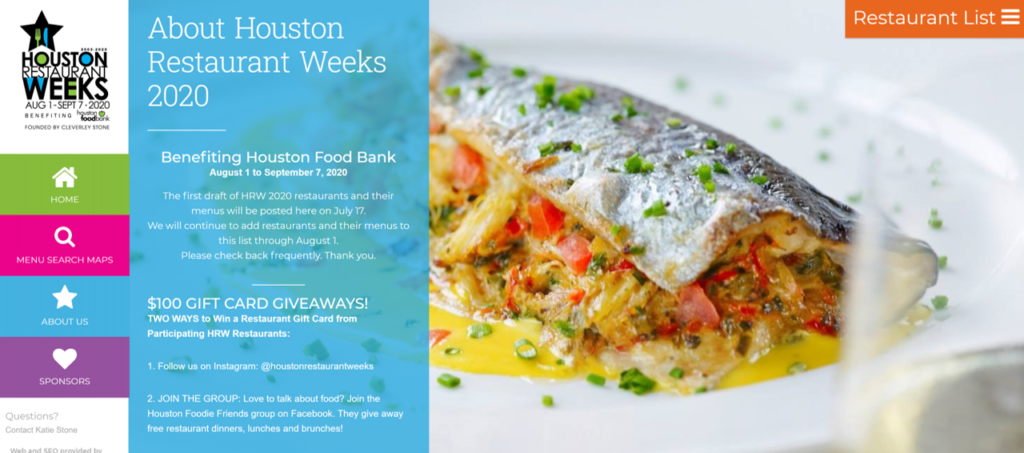
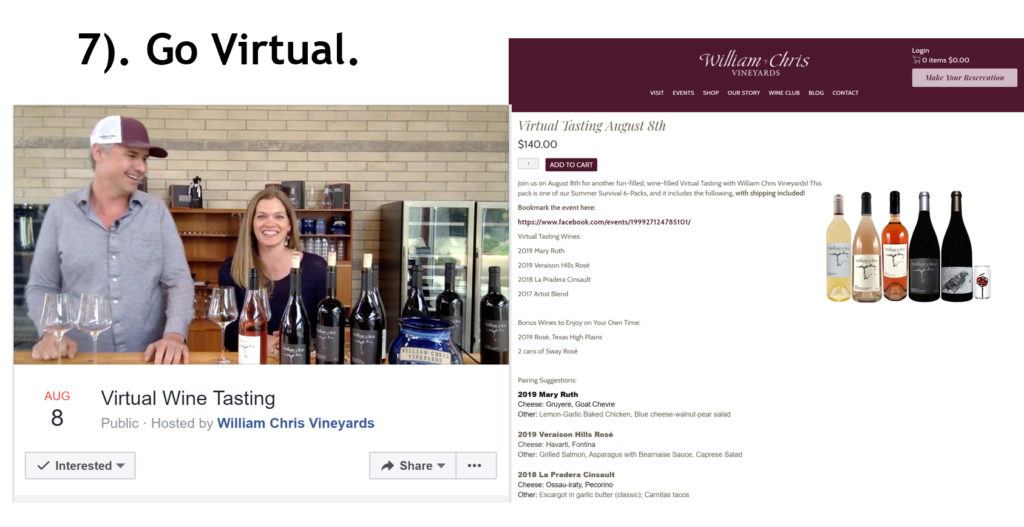
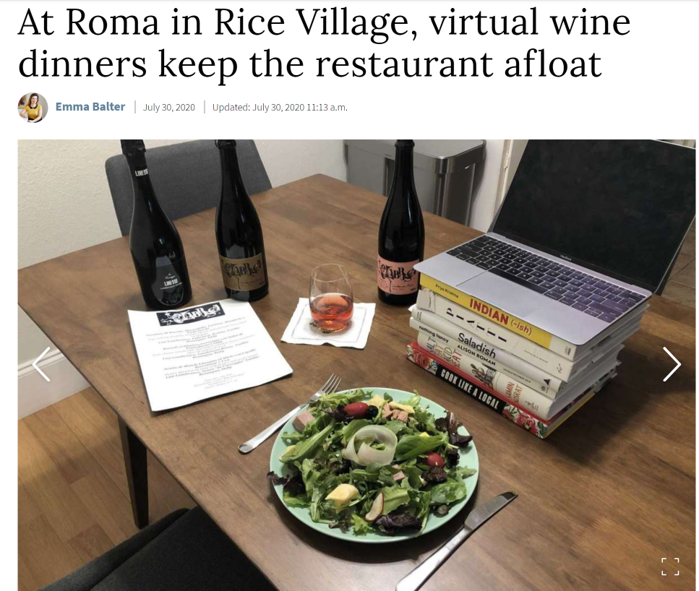
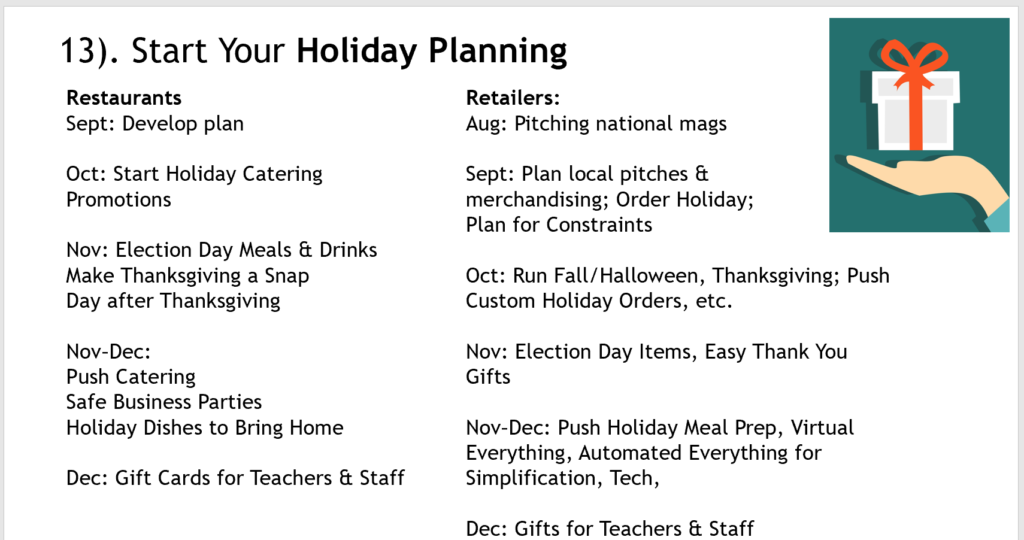

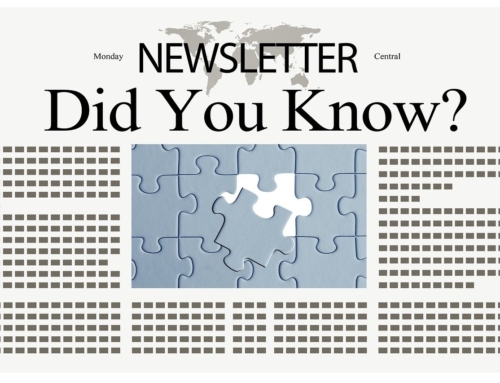
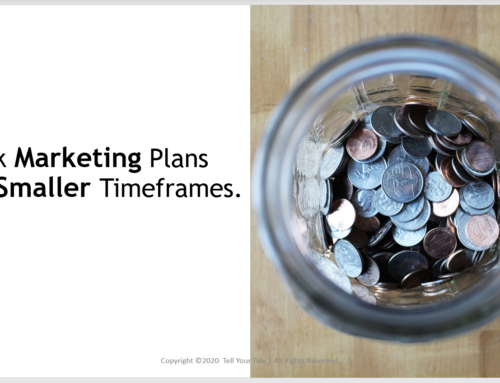
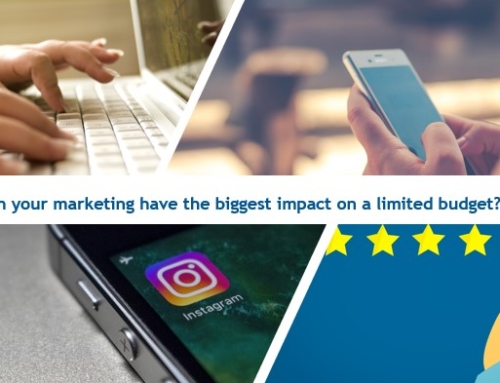
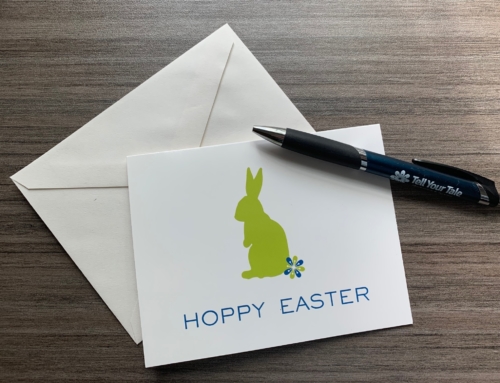

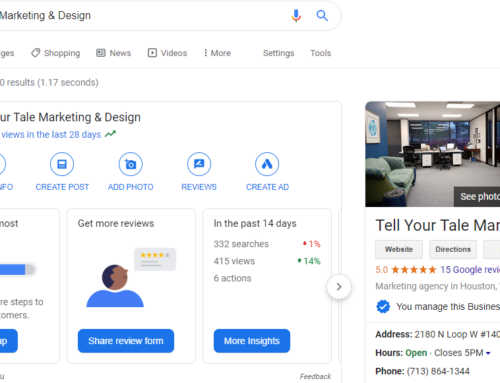
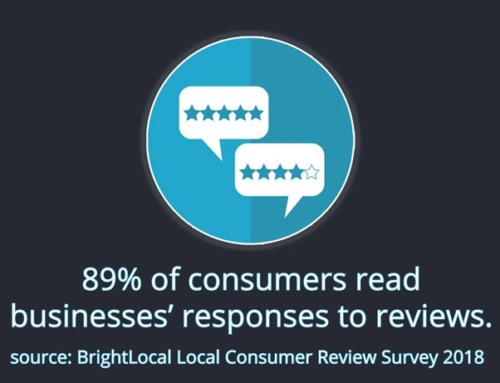
Leave A Comment